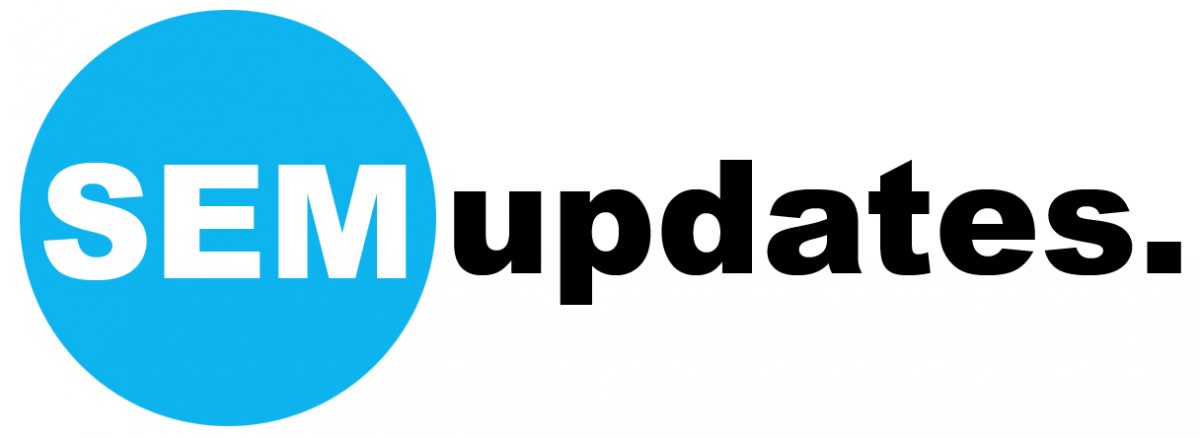For small businesses and emerging entrepreneurs, entering the digital marketplace is a challenging yet essential endeavor. The primary barrier is often the significant financial and technical resources required for establishing and maintaining an effective e-commerce platform.
Webflow emerges as a compelling solution to these challenges, offering an integrated, user-friendly platform that combines the elements of design and development.
This article will explore Webflow’s features, its cost-effectiveness, and its particular advantages for small businesses looking to build a robust e-commerce site without the need for extensive technical expertise.
Webflow provides a unique blend of design flexibility and developmental capabilities, making it a suitable choice for small businesses. This article aims to shed light on why Webflow holds distinct advantages for entrepreneurs and how it compares to traditional web development platforms.
The Challenges Faced by Small Businesses in E-commerce
Navigating the intricacies of the digital marketplace can be a daunting experience for small businesses, particularly those with limited resources and technical expertise who don’t know how to create a website from scratch. It is essential to dissect some of these challenges in greater depth to better understand the value that Webflow brings to the table.
#1 High Development Costs
Starting an e-commerce site from scratch often involves substantial upfront investment. Hiring web developers, designers, and potentially even consultants can quickly deplete limited budgets. Additionally, the procurement of hosting services, SSL certificates, and other essential software licenses further adds to the financial burden. These costs may create a barrier to entry for many small-scale operators. A better road to take would be to team up with a Webflow agency and get a properly built and scalable e-commerce Webflow site.
#2 Lack of Technical Expertise
Many small businesses lack in-house technical capabilities, making them dependent on external agencies or freelance contractors for even trivial updates or bug fixes. This not only slows down the process of implementing changes but also adds another layer of operational costs. The absence of a dedicated technical team hampers adaptability, a crucial factor for surviving in the ever-changing e-commerce landscape.
#3 Maintenance and Scalability
Even after the initial setup, an e-commerce site demands regular maintenance to ensure optimal functionality. Updates, security patches, and the addition of new features are not only time-consuming but can also require financial investment. Scalability is another hurdle; as the business grows, so does the complexity of managing the site, making future upgrades challenging and potentially costly. When choosing your web developer, make sure they provide quality Webflow enterprises maintenance services so you don’t have to worry about ongoing maintenance of your site.
An Overview of Webflow’s Features
Now that we’ve identified the challenges faced by small businesses in the e-commerce landscape, it’s time to explore how Webflow serves as a powerful solution. Let’s delve into the key features that make Webflow an ideal choice for entrepreneurs seeking a user-friendly, yet robust platform. One significant advantage Webflow offers is the opportunity for continuous feature feedback from its user community, ensuring that the platform evolves according to real-world needs.
#1 Drag-and-Drop Interface
Webflow’s user interface is ingeniously designed to cater to users with varying degrees of technical expertise. At its core is a drag-and-drop feature, simplifying the web development process. You can effortlessly create, customize, and rearrange website elements without any coding knowledge. This intuitive interface empowers entrepreneurs and designers to take control of their websites, reducing the reliance on developers.
#2 Responsive Design
In an era where mobile devices dominate online access, having a responsive design is paramount. Webflow’s platform inherently incorporates responsive design principles, ensuring that your website adapts seamlessly to different screen sizes and resolutions. This capability eliminates the need for separate mobile versions of your site, streamlining the development process and enhancing the user experience.
#3 CMS and SEO Tools
Content management is central to the success of any e-commerce venture. Webflow’s built-in Content Management System (CMS) simplifies content creation, organization, and updates. Moreover, the platform offers robust SEO tools, facilitating the optimization of your site for search engines. This dual functionality saves valuable time and resources while enhancing your website’s visibility in online searches.
#4 E-commerce Capabilities
Webflow doesn’t merely stop at design and content management; it’s also well-equipped for e-commerce. The platform features an array of tools for managing your online store, including integrated shopping carts, secure payment gateways, and inventory management. Whether you’re selling physical products or digital goods, Webflow offers the flexibility to build and manage your e-commerce operations effectively.
Cost-Effectiveness of Webflow for Small Businesses
Now that we’ve explored the features that set Webflow apart, it’s time to delve into the core advantage it offers to small businesses: cost-effectiveness. Let’s break down precisely how Webflow can be a financially prudent choice for entrepreneurs with limited budgets.
#1 Upfront Costs
One of the most compelling aspects of Webflow is its affordability, particularly when compared to traditional web development approaches. When you opt for conventional web development, you’re often faced with substantial upfront costs.
Hiring a team of developers, designers, and other specialists can be a significant financial burden. Conversely, Webflow’s pricing structure is designed to be accessible for small businesses. With options ranging from free trials to reasonably priced subscription plans, Webflow allows you to get started without breaking the bank. This affordability extends to hosting, as Webflow provides hosting services as part of its packages, eliminating the need for additional hosting expenses.
#2 Ongoing Expenses
Beyond the initial setup, the long-term expenses of maintaining an e-commerce website can be a considerable concern for small businesses. Traditional development often involves ongoing fees for maintenance, updates, and bug fixes, all of which can quickly accumulate. Webflow simplifies this aspect by streamlining the maintenance process. Updates are managed seamlessly within the platform, reducing the need for external technical support. Additionally, Webflow’s hosting services include automatic backups and security features, providing peace of mind without the need for separate investments in these areas.
#3 Resource Savings
In the world of small business, time and personnel resources are precious commodities. Webflow recognizes this and offers a solution that maximizes resource efficiency. Its user-friendly interface empowers non-technical users, reducing the reliance on dedicated developers or designers for routine tasks. This not only speeds up processes but also translates into savings in labor costs. With Webflow, small businesses can allocate their resources more strategically, focusing on core business activities like marketing, customer service, and product development.
Benefits of Webflow for E-commerce Businesses
Beyond its user-friendly features and cost-effectiveness, Webflow offers a range of specific benefits tailored to the unique needs of e-commerce businesses. Let’s explore why this platform is particularly advantageous for those looking to thrive in the competitive online retail landscape.
#1 Enhanced Customization
Webflow empowers e-commerce businesses to stand out in a crowded marketplace by offering extensive customization options. With complete control over design, layout, and content, you can create a unique and memorable online shopping experience. Tailoring your site to match your brand’s identity is a breeze, ensuring consistency and professionalism across your online presence. Want to embed your Instagram feed or Google reviews on it? No problem, it can be done very easily.
#2 Fast Loading Speeds
In the world of e-commerce, speed matters. Webflow’s optimized hosting infrastructure ensures fast loading times for your website. This is crucial because slow-loading websites can lead to high bounce rates and lost sales. With Webflow, you can provide a seamless and responsive shopping experience, enhancing customer satisfaction and retention.
#3 Scalability
E-commerce businesses often experience fluctuations in traffic and demand. Webflow’s scalability allows you to seamlessly handle growth without disruptions. Whether you’re launching new product lines or experiencing a sudden surge in traffic due to promotions, Webflow’s infrastructure can adapt to your needs, ensuring your site remains responsive and reliable.
#4 Advanced SEO Tools
Search engine optimization is a lifeline for e-commerce websites. Webflow offers a suite of advanced SEO tools that enable you to optimize your site for search engines effectively. This includes customizable meta tags, clean HTML markup, and the ability to create SEO-friendly URLs. By enhancing your site’s visibility in search results, you can attract organic traffic and boost sales.
#5 Secure E-commerce Features
Security is paramount in e-commerce. Webflow incorporates robust security features to protect both your business and your customers. It includes SSL certificates, secure payment gateways, and PCI compliance. These measures not only safeguard sensitive data but also build trust with your online shoppers, encouraging them to make purchases.
#6 Data Analytics and Insights
Webflow provides valuable analytics and insights to help you make data-driven decisions. You can track user behavior, monitor sales, and identify areas for improvement. This data-driven approach allows you to refine your e-commerce strategies, optimize the user experience, and maximize conversions.
How to Get Started with Webflow
Now that we’ve established the advantages of Webflow and its cost-effectiveness, let’s explore how to embark on your journey of building a cost-effective e-commerce site using this powerful platform.
#1 Sign Up
The first step is straightforward: head over to the Webflow website and sign up for an account. You have the option to start with a free trial, allowing you to test the platform’s features before committing to a subscription. This trial period is invaluable for small business owners and entrepreneurs to become familiar with the platform’s capabilities.
#2 Choose a Template or Start from Scratch
Webflow offers a variety of professionally designed templates that cater to different industries and styles. You can choose one that aligns with your brand and vision. Alternatively, if you have a specific design in mind, you can start from scratch and build your website exactly the way you want it.
#3 Customize
Once you’ve selected a template or started from a blank canvas, Webflow’s intuitive drag-and-drop interface comes into play. You can effortlessly customize your website’s layout, fonts, colors, and content. No coding is required, making it accessible even for those without technical backgrounds.
#4 Set Up Your Online Store
For e-commerce entrepreneurs, Webflow offers a robust set of tools to create and manage your online store. You can add products, set prices, manage inventory, and even integrate secure payment gateways to facilitate transactions. Webflow’s e-commerce capabilities are designed to streamline your online selling process.
#5 Publish
Once you’ve designed, customized, and set up your online store, it’s time to make your website live. Webflow simplifies this process with a one-click publishing feature. Your site will be hosted on Webflow’s servers, eliminating the need for external hosting services.
Webflow offers a wealth of resources to help you navigate the platform and optimize your e-commerce site. These include video tutorials, webinars, and a vibrant community forum where you can seek advice and solutions from fellow users.
Conclusion
So there you have it, a comprehensive look at why Webflow is a strong contender when it comes to building a cost-effective e-commerce site for small businesses. Its ease of use, extensive features, and affordable pricing make it an invaluable resource for entrepreneurs looking to establish a strong online presence. Isn’t it time you considered Webflow for your e-commerce ambitions?





1 Comment